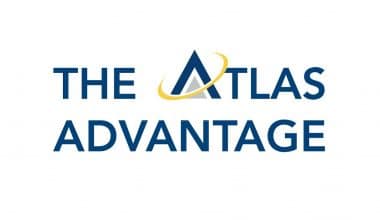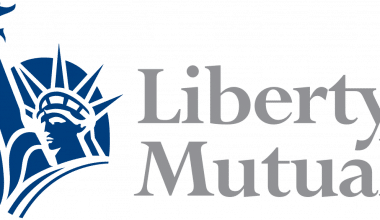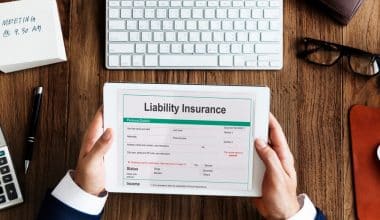You probably don’t give much thought to your health insurance ID card. I mean, unless you, your doctor, or another healthcare practitioner needs it, it spends most of its time in your wallet.
However, let’s pause for a moment to examine the numerous relevant details contained on your card. After all, it’s your ticket to treatment and protection, so you should be familiar with the meaning of each field. So, in this article, we will discuss every detail of how to read your insurance card.
What is Insurance Card?
An insurance card has a Medicare number, not your Social Security number, printed on it. Your privacy will be preserved in this way. Suppose you are enrolled in a Medicare Advantage Plan (like an HMO or PPO). In that case, you should carry and use your Medicare Advantage Plan ID card in place of your original Medicare card whenever you seek medical attention. Keep your Medicare card safe, and don’t lose your prescription medication coverage card. You should still carry your Medicare card even if you use one of the abovementioned cards.
Details From Your Insurance Card
Be aware that there is no standard format for insurance cards. However, the following should be included in the crucial details:
#1. Name of the Insurance Provider
The insurance provider and coverage details are clearly labeled in the card’s header.
Identify the member and their membership number. A person’s insurance coverage will reflect
#2. The Member’s Name and Number
A member number makes it easier for insurance companies to locate a specific.
#3. Policy Holder Name
The name of the subscriber or policyholder is another piece of information that could go here. When someone signs up for a health insurance plan, they are considered a subscriber.
#4. Group Number
The group number tells the insurance company which group you belong to. It helps figure out what perks come with that particular plan.
#5. Date it Takes Effect.
The effective date of your insurance policy is the first day for which coverage is in effect. Your insurance card might not reflect this. Contact your insurer if you have questions about the start of your policy’s coverage.
#6. Insurance Company Contact Details
The number and address of your insurance provider are printed on your card. Find an in-network provider, determine whether a service is covered, and learn more about your health insurance coverage—all by calling your insurance carrier.
How to Read Your Insurance Card
#1. Data That Could Be Used to Track You
Typically, the name on your health insurance card will be your own. The cardholder’s name may not appear if insurance coverage is provided by someone else, such as a parent. The card may contain additional details, such as your address, depending on the insurance provider.
#2. Insurance Plan ID
The policy number will be printed on the front of an insurance card. There is a unique policy number for each health insurance plan. Your policy number can be found on your ID card where it says “Policy ID” or “Policy #.” The insurance company will use this number to keep track of your medical expenses.
#3. Policy ID for the Group Health Insurance Program
Your group plan number can be found on your insurance card if you participate in an employer-sponsored health care plan. This number identifies your employer’s health insurance plan to the insurance company. You’re eligible for this benefit as an employee. You won’t always find a group plan number on an insurance card.
#4. How to Get in Touch with an Insurance Agency
You can generally find the insurance company’s address, phone number, and website on the bottom or back of your health insurance card. Checking your benefits or obtaining other information will necessitate this data. Call your insurance company, email or visit their website to verify coverage for a specific treatment.
#5. Amounts Covered, Network Status, and Out-of-Pocket Costs
The “coverage amount” is the maximum amount your insurer will pay toward your medical expenses. Your insurance card could have this information printed on the front. The percentages are typically written down as 10, 25, or 50%. Several percentages may be displayed together. If you notice four different percentages, each could refer to a different type of medical service (e.g., urgent care, specialized care, emergency room service).
#6. Both Inside and Outside the Network
Another list could appear with two percentages. The first percentage, typically higher, reflects the amount paid by the insurance company to “in-network” medical professionals. This group of doctors and hospitals is considered “in-network” because they are contracted with the insurance company. The percentage represented by the second number is the sum your insurance company will pay to “out-of-network” medical professionals. Your insurance company does not contract with any doctors or hospitals that are not in their network. You can see doctors who are “out of network,” but you’ll have to pay more than you would if you went to an “in-network doctor.” The patient is responsible for any costs beyond the insured portion at the time of service. Contact them directly if a doctor is “in-network” with your insurance.
#7. Co-Pays
At the end, a monetary value like $10 or $25 may appear. Many health insurance policies require co-payments, but not all. Office visits, specialized care, urgent care, and emergency department treatment are all examples of the numerous forms of care that could account for multiple monetary amounts. Copayments for in-network versus out-of-network providers may vary, as shown by two separate dollar figures.
#8. Prescription Coverage
Your health insurance may partially or fully cover prescription drugs. In that case, your health insurance card could feature a pharmacy logo. Not all cards have this emblem, even if your health insurance covers prescriptions. Find the Rx sign on your card. You or your insurance company may see a dollar figure or percentage next to the Rx sign to indicate your share of the cost of a prescription. Call the number on the back of your insurance card to determine if and how much your plan covers prescription drugs.
What is Rxgrp on an Insurance Card?
Health insurance companies use the 6-digit Rx BIN number in electronic pharmacy claims processing. Even before a new member has been issued an ID card, they can use their Rx BIN and PCN numbers to pick up medicines or refills. The Rx BIN, short for Rx Bank Identification Number, lets the pharmacy know whose insurance plan you’re using so they can fill your prescription correctly.
Figures to Remember from Your Insurance ID Card
Medicare Part D and Medicare Advantage Prescription Drug (MAPD) cards have four sets of numbers:
- Your Medicare ID can be located on your Medicare card and is your unique identifier within the Medicare system.
- For pharmacies to complete your prescription insurance claim, you must provide your Rx BIN Number.
- The RxPCN provides the pharmacist with additional information about your insurance plan.
- Your insurance company’s group identification number (RxGRP).
- When you use your Medicare Part D or MA-PD card at a pharmacy, the staff member will check your insurance company using your BIN number.
Where Can I Find My Rx BIN Number?
Medicare Part D and Medicare Advantage Prescription Drug Plan members should look for their Rx BIN number on either the front or back of their plan ID card.
Your RX BIN number, Medicare ID, PCN, and group ID can be found in the bottom left corner of your card. Preceding the BIN number will be the letters “BIN.”
An Rx BIN number will not be included on the original Medicare card. Your Medicare Part A and Part B membership will be verified solely by your Medicare ID number, the only information on your card.
I Can’t Find My Rx BIN Number What Should I Do?
If the BIN number is not on your plan ID card, your insurance provider should have a list of plans on their website. In most cases, a BIN number can be found on the list of plans.
Your Medicare plan’s contact information can be found on your plan ID card; if you still can’t locate your BIN online, call them. Upon seeing your card, your pharmacist should also be able to provide you with the BIN number.
This CMS technical document goes into greater depth on Rx BIN numbers and their associated information.
Are PCN, Rx BIN, and Group ID the Same Thing?
No. The Rx BIN number is one of four digits on a typical Medicare Part D or MA-PD plan ID card. You should also expect to find the following information on your private Medicare plan card:
Group Number
“Group Number” is an abbreviation for “Group Resource Pool.” Your group ID is your employer or group identification number (sometimes written as “GRP” or “Rx GRP” on some cards).
The group number on your plan ID card may or may not apply to your Medicare Part D or MA-PD plan.
PCN
Another identifier pharmacies use is the processor control number or PCN Rx. This is a unique identifier for each patient and treatment strategy. It aids in identifying which claims processor will be responsible for handling your claims, whether or not a given medication or service is inside the plan’s coverage, and how much will be paid for that claim.
Examples of BINs
Rx BIN numbers add another layer of complexity to the already tricky task of navigating the world of prescription drugs and insurance. This table provides some sample Rx BIN numbers associated with North Carolina Managed Care Organizations.
How do You Read an Insurance Policy Number?
Where can I get my insurance card’s policy number? Your insurance policy number is often printed on the front of your card. It could be labelled as “Policy #” or “Policy ID.” Contact your insurance company if you can’t remember your policy number.
What Does 20% Mean on Insurance Card?
Assume your health insurance plan requires a 20% coinsurance payment (not including deductibles and copayments). If you have a $100 medical bill and have met your deductible, the insurance company will pay $80, and you will be responsible for the remaining $20.
How Can You Tell What Type of Card Is Your Insurance?
For accurate claims filing, insurance firms indicate the type of plan on your ID card. Cards for Medicaid and Child Health Plus will contain the logos of those respective programs, whereas ID cards for other plan types (including HMOs) will mention the plan type.
What Does the Number on Insurance Mean?
Your insurance plan is identified by a unique number called a policy number that appears on your insurance card. Your insurance company uses your policy number in the billing and accounting processes. There are a few other names for policy numbers: subscriber ID, member ID, and policy number.
What is the Subscriber Name on Card Insurance?
A subscriber or member is a person who signs up for insurance through a provider. The policyholder is another name for this person.
How Long is the Insurance Policy Number?
A vehicle identification number (VIN) is 17 characters long, yet a car insurance policy number is only 8-13 characters long. If your vehicle identification number (VIN) is less than 17 characters long, it was likely built before 1981, when VINs began to be standardised.
Do all Insurance Cards Look the Same?
Although the designs may vary, all insurance cards contain the exact essential details. You’ll better grasp your benefits if you take the time to learn all the terminology and specifics involved.
Conclusion
Is it prudent to invest in credit card insurance? Whether or not you should do so depends on your unique circumstances, but it could be the best course of action if an unexpected catastrophe causes you to have a financial shortfall. If you decide to proceed, read the fine print and thoroughly understand your commitment.
- NURSE PRACTITIONER MALPRACTICE INSURANCE: All To Know
- Can You Insure a Car Not in Your Name: Everything You Need
- How Much Does Small Business Insurance Cost: 2023 Guide






